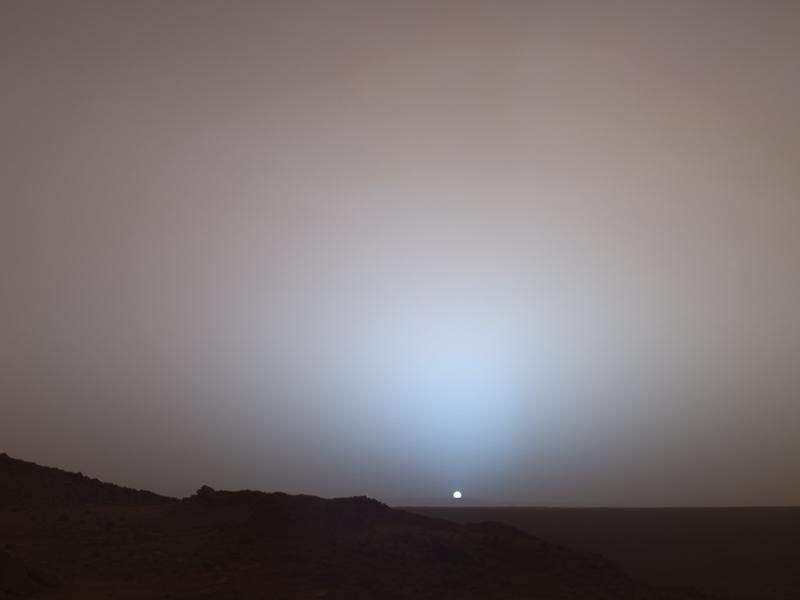Blue or red sky
Blue or red sky
The APOD picture for today said that the martian sky would be redder than earth sunsets (20. June 2005), but from what I see, it's almost completely blue. Is this an error, or am I not seeing something?

Pretty strange indeed. The only explanation they give is that the filters they used bring out the blue color:
This small panorama of the western sky was obtained using Pancam's 750-nanometer, 530-nanometer and 430-nanometer color filters. This filter combination allows false color images to be generated that are similar to what a human would see, but with the colors slightly exaggerated.
Ric wrote:Posted: Tue Jun 21, 2005 5:43 am Post subject: once in a blue moon
--------------------------------------------------------------------------------
An atmospheric layer of particles (such as from volcanic activity or forest fires) between an observer and the moon scatters red light to leave direct light from the moon a blue colour. This is the origin of the expression "once in a blue moon" because this is a very rare occurrence.
In September 1950 smoke from a Canadian forest fire drifted across the Atlantic, and Europeans were able to see a blue moon.
In my book "Seeing The Light" (ISBN 0-9735316-1-4) I speculate on the possibility that "once in a blue moon" might be a daily event on the planet Mars because of the dust in the atmosphere making the sky pink. The APOD picture for August 4, 1997 shows a "salmon" coloured sunset on Mars, which might be explained as resulting from Rayleigh scattering removing most of the blue while Mie scattering from dust particles removes some of the pure red leaving a significant portion of green wavelengths to balance the remaining red to the more neutral "salmon". Does anyone know if the size of dust particles in the atmosphere of Mars is appropriate to produce this "blue moon" phenomenon?
blue sun in red sky at sunset on Mars
The APOD for June 20 2005 showing a blue setting sun in a red sky appears to be very strong evidence that the size of the dust particles in the sky of Mars includes a significant proportion at the appropriate size (about twice the wavelength of visible light) to cause Mei scattering of red wavelengths of light, which produces the "blue moon" phenomenon.
The extra redness in the sky is part of the same phenomenon that makes the sun (or the moon) look blue, indeed the scattering of the red is the cause of the "blue moon" phenomenon seen in the sun in this APOD if my analysis is correct.
Anyone interested in the optics (without the mathematics) might check the Q&A section of my web site <RCartier.com> and my recent book "Seeing The Light" listed there.
The extra redness in the sky is part of the same phenomenon that makes the sun (or the moon) look blue, indeed the scattering of the red is the cause of the "blue moon" phenomenon seen in the sun in this APOD if my analysis is correct.
Anyone interested in the optics (without the mathematics) might check the Q&A section of my web site <RCartier.com> and my recent book "Seeing The Light" listed there.
-
Mitsumeru hoshi
- Asternaut
- Posts: 2
- Joined: Tue Jun 21, 2005 3:43 pm